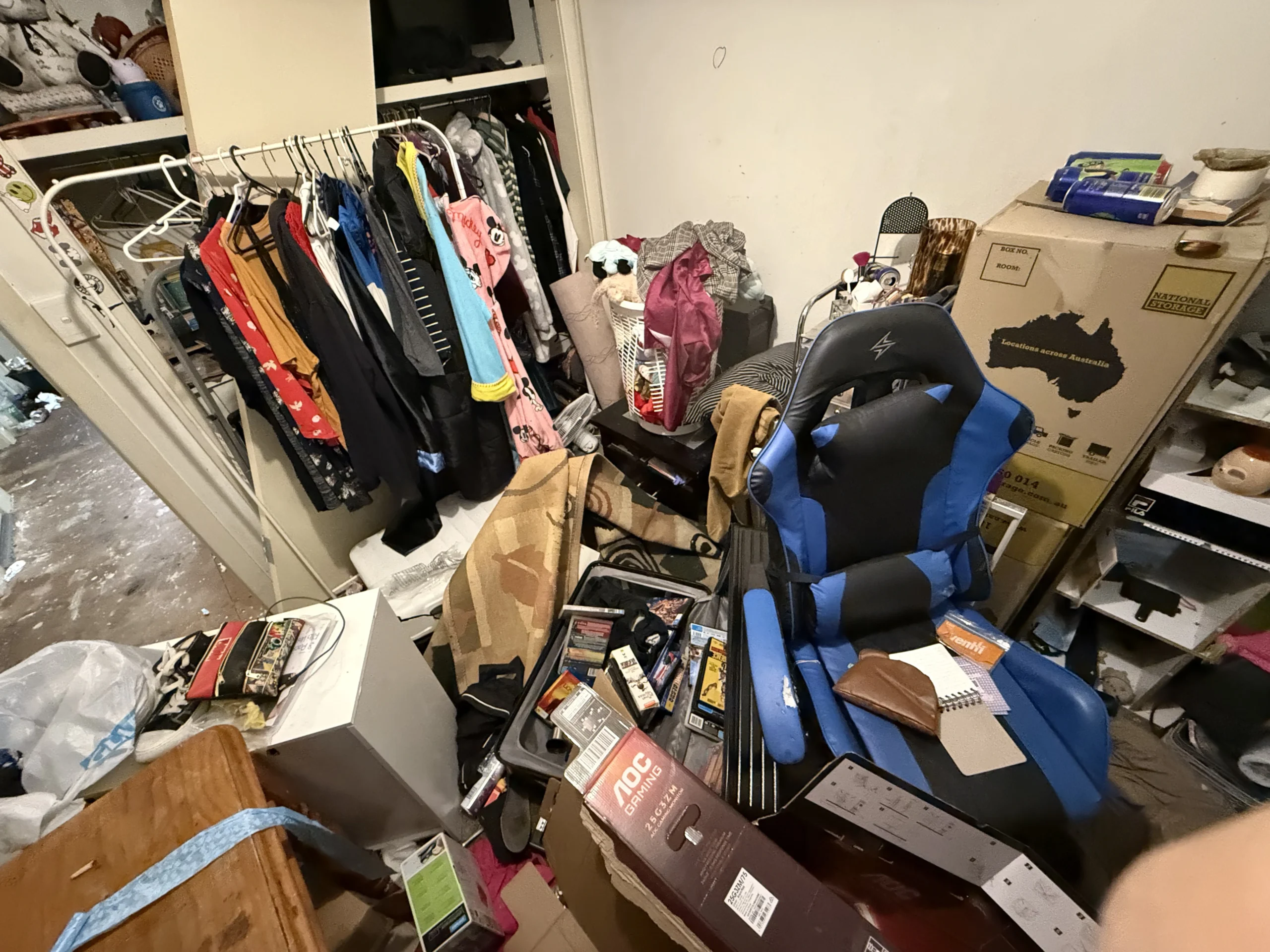Decluttering a home affected by hoarding can seem like an overwhelming task, but with the right approach, it’s possible to make the process safe, supportive, and successful. Hoarding is more than just an organisational issue—it is a serious mental health condition that can profoundly affect a person’s well-being. Understanding how to handle this delicate situation with care is key to ensuring the emotional, mental, and physical health of the person involved. Here’s how to safely and effectively help someone declutter a hoarded home, from multiple angles.
1. Understanding Hoarding: The Emotional and Mental Struggles
Hoarding often stems from underlying mental health issues such as anxiety, obsessive-compulsive disorder (OCD), or even trauma. For many, the items they collect are linked to a sense of security or comfort. The emotional attachment to these objects can be deeply rooted, and the idea of letting them go can be terrifying. This is why it’s crucial to approach the situation with empathy and care.
It’s essential to recognise that the hoarder may experience a profound sense of shame or embarrassment regarding their living situation. These feelings can make them reluctant to accept help, but they don’t need to go through this process alone. Gaining the individual’s trust and collaborating with professionals, such as therapists, is crucial for providing the necessary emotional support throughout the decluttering process.
2. The Impact of Hoarding on Health and Well-being
Living in a hoarded home can negatively affect both physical and mental health. Piles of clutter often create an environment that is unsafe and unhygienic. Dust, dirt, and mould can accumulate in hidden corners, leading to respiratory issues, allergies, and other health concerns. The cluttered space can also make it challenging to move around, increasing the risk of falls and accidents, especially for older adults.
On the mental health side, the constant stress of living in a disorganised and overcrowded home can exacerbate anxiety, depression, and feelings of hopelessness. The clutter often serves as a constant reminder of their struggles, which can affect their mood and overall mental well-being.
By helping to declutter, you’re not just making the space more organised—you’re contributing to the person’s overall health and well-being. The fresh, clean environment can lead to improved air quality, reduced allergens, and fewer distractions. It’s also likely to have a positive impact on their mental state, offering them a sense of relief and accomplishment.

3. Creating a Safe and Supportive Environment
The first step in decluttering a hoarded home is to create a safe space where the person can feel heard and supported. This requires patience and empathy. You may want to begin by simply listening to the person’s concerns and acknowledging how they feel. This will help to reduce any anxiety and open up the lines of communication.
Before starting the decluttering process, it’s a good idea to have a plan. This may involve consulting with a mental health professional to ensure that the person’s emotional and psychological needs are being met. In many cases, therapy is essential for addressing the root causes of hoarding behaviour.
As you begin the physical decluttering process, always work at the individual’s pace. Don’t push them to discard items they’re not ready to part with. Instead, make the process as collaborative as possible. Let the person decide which items to keep, which to donate, and which to throw away. This sense of control can make the process feel less overwhelming and help to build trust.
4. Involving Family and Friends
For many people who hoard, their family members may not fully understand the complexity of the situation. It’s crucial to involve family members in the process in a supportive and non-judgmental way. Family and friends can offer emotional encouragement and help the person make decisions about their belongings. However, it’s essential to avoid creating a sense of guilt or shame around the process.
Sometimes, family members may need to be educated about hoarding. They should understand that hoarding is not simply about being messy; it’s a mental health issue that requires compassion and understanding. Encourage open conversations where family members can express their concerns and offer support.
5. The Role of Professional Organisers
While family and friends play a vital role, professional organisers can make a significant difference in safely decluttering a hoarded home. Professional organisers are skilled in creating systems and structures that make the process easier to manage and organise. They can also offer emotional support by guiding the person through the process and helping them to make decisions about their belongings.
A professional organiser will typically work in stages. They may start by tackling small, less emotionally charged areas, such as clearing a pathway or organising a closet. As trust builds, the person may become more comfortable with clearing larger, more emotionally significant areas.
For some homes, hoarder house cleaning may be necessary, especially if the clutter has led to unhygienic conditions or health risks. Trauma-informed declutter practices are essential in these cases to ensure that the hoarding behaviours are addressed with sensitivity, avoiding any re-traumatisation of the individual. It’s also important to consider that in extreme hoarding situations, biohazard clean-up may be necessary to address the accumulation of waste, mould, or other hazardous materials.

6. The Physical Benefits: Improving Productivity and Mood
Once the decluttering process begins to take shape, the immediate physical benefits become clear. For example, moving around the home becomes easier and safer. When things are organised, it’s much simpler to find what you need, which can improve daily productivity.
A clutter-free home can also have a significant impact on a person’s mood. Studies have shown that an organised environment leads to reduced stress levels and increased feelings of calm and control. When the clutter is removed, people often experience a sense of relief and accomplishment. This positive change can increase self-esteem and improve their mental outlook, leading to greater emotional stability.
7. Boosting Wealth and Financial Stability
While hoarding may not seem directly linked to finances, there can be a financial aspect to the decluttering process. Often, hoarders hold on to valuable items out of a sense of attachment or fear of waste. By helping to identify items that are no longer needed or of little value, you can assist the person in making more informed decisions about what to keep, what to sell, and what to donate.
In some cases, individuals can sell valuable items and use the proceeds to improve their financial situation or address other needs. By removing the excess, they may also be able to lower their living costs—less clutter means less cleaning, less storage space is required, and fewer items need maintenance.
8. Maintaining the Momentum
Decluttering a hoarded home is not a one-time event—it’s a long-term process that requires ongoing support and maintenance. Once the initial work is done, it’s essential to help the individual establish habits that prevent clutter from building up again. This could include regular check-ins with a professional organiser or ongoing therapy to address the underlying issues that contribute to hoarding.
Setting small, manageable goals for maintaining the organisation can help ensure the progress made is not lost. It’s essential that the individual feels supported in their journey, knowing that it’s okay to ask for help when needed.

Conclusion
Decluttering a home affected by hoarding is not just about cleaning—it’s about offering support and understanding to someone who is struggling with a mental health condition. By taking a thoughtful and gradual approach, you can help create a safe, healthy environment that promotes physical, emotional, and mental well-being. With the right resources, a compassionate mindset, and ongoing support, it’s possible to help someone move towards a healthier, more organised lifestyle.
Ready to reclaim a clutter-free home? Contact us today for professional hoarder house cleaning and trauma-informed decluttering services. Call us on 03 8583 9103, email nancy@homeorganisers.com.au, or visit homeorganisers.com.au to get started.


